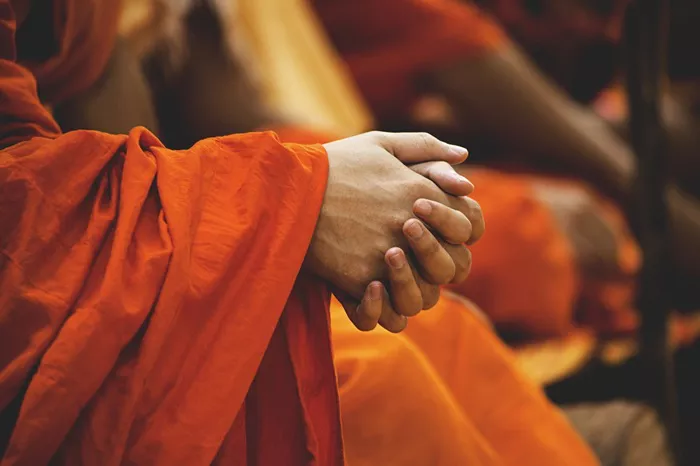Buddhist monks are people who choose to follow the path of the Buddha. They live a simple life, study Buddhist teachings, and try to become wise and peaceful. But what do they call themselves? This question may seem simple, but the answer depends on the country, tradition, and language. In this article, we will explore the names and titles Buddhist monks use for themselves in different traditions. We will also look at why these names matter and what they mean.
What Does Being a Buddhist Monk Mean?
Before talking about what monks call themselves, it is important to understand who they are. Buddhist monks are members of the Sangha. The Sangha is one of the three jewels in Buddhism, along with the Buddha and the Dharma (the teachings). Monks dedicate their lives to following the Buddha’s teachings, meditating, and helping others learn about Buddhism.
Monks usually live in monasteries or temples. They follow special rules called the Vinaya. These rules guide how they live, what they eat, and how they behave.
Common Names Buddhist Monks Use for Themselves
1. Bhikkhu
The word Bhikkhu is one of the oldest and most common names monks use, especially in the Theravada tradition found in countries like Thailand, Sri Lanka, Myanmar, Laos, and Cambodia. It means “one who lives by alms” or “beggar.” This refers to monks depending on laypeople’s offerings for their food and daily needs.
Bhikkhus strictly follow the Vinaya rules and live a life of celibacy, simplicity, and meditation. The female equivalent is called a Bhikkhuni.
2. Bhikshu or Bhikshuṇī
In Mahayana traditions, common in China, Korea, Japan, and Vietnam, monks often use the Sanskrit term Bhikshu (for men) and Bhikshuṇī (for women). These words have a similar meaning to Bhikkhu and Bhikkhuni. They also emphasize living by alms and following the Buddha’s rules.
3. Theravada, Mahayana, and Vajrayana Titles
The names monks use can vary depending on the tradition:
- Theravada Monks — Use Bhikkhu or Bhikkhuni.
- Mahayana Monks — Use Bhikshu or Bhikshuṇī and may also use local terms like “Seng” in Chinese or “Sunim” in Korean.
- Vajrayana Monks — Common in Tibet and Nepal, Vajrayana monks are often called Lamas. The word “Lama” means “teacher” and is a title given to respected monks and spiritual leaders.
Local Names and Titles for Buddhist Monks
1. Thailand: Phra and Luang Por
In Thailand, monks are often called Phra, which means “monk” or “venerable.” Senior monks are sometimes called Luang Por, meaning “Venerable Father,” as a mark of respect.
2. Japan: Osho and Sensei
In Japan, Buddhist monks in Zen or other Mahayana traditions are sometimes called Osho or Sensei. “Sensei” means teacher, and “Osho” is a respectful title for a monk who leads a temple or teaches meditation.
3. Tibet: Lama and Rinpoche
In Tibet, monks are often called Lama, meaning teacher or guru. Some monks who are believed to be reincarnated masters are given the title Rinpoche, which means “precious one.” These titles show respect and honor spiritual achievement.
Why Do Buddhist Monks Use These Names?
The names monks call themselves are more than just labels. They show the monk’s role and status in the Buddhist community. They also reflect the monk’s commitment to the Buddha’s teachings and a life of discipline and meditation.
For example, calling oneself a Bhikkhu means the monk has taken formal vows and lives by the Vinaya rules. Using titles like Lama or Sensei shows respect for teaching and spiritual guidance.
How Monks Are Seen by Laypeople
Lay Buddhists, or followers who are not monks, often use respectful words when speaking to monks. This shows respect for their dedication and spiritual work. These respectful terms vary by country and culture but always emphasize honor and reverence.
Monastic Names and Personal Names
When people become monks, they usually receive a new monastic name. This name is different from their birth name and often reflects Buddhist values. For example, a monk might receive a name meaning “peace,” “wisdom,” or “compassion.”
This new name symbolizes a fresh start on the spiritual path and a break from past life habits.
The Importance of Monastic Titles in Buddhist Culture
Monastic titles help preserve the rich traditions of Buddhism. They keep the connection between monks and their history alive. They also guide people on how to behave toward monks and how monks behave in return.
For example, in many countries, monks are given special seats, offered food first, or shown great respect in public because of their title and role.
Monks and Buddha Statues
Buddhist monks often spend time in meditation and rituals near Buddha statues. These statues remind monks of the qualities they want to develop, such as calmness, kindness, and wisdom.
Conclusion
In summary, Buddhist monks call themselves different names depending on their tradition, country, and role. Some common names are Bhikkhu, Bhikshu, and Lama. These names show respect, dedication, and spiritual commitment.
Whether called Bhikkhu in Thailand, Lama in Tibet, or Sensei in Japan, these names connect monks to the Buddha’s path and their communities.
Learning about these names helps us understand the deep respect and tradition behind the life of Buddhist monks.

